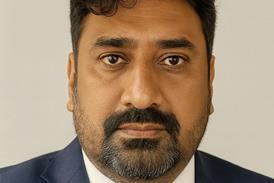Committal – Breach of injunction – Claimants publishing photographs on Facebook and Twitter in breach of injunction
Attorney general v Harkins; Attorney general v Liddle: Queen's Bench Division: 26 April 2013
In February 1993, a two-year-old had been killed by two eleven-year-olds (V and T). In November, V and T had been convicted of murder and sentenced to life imprisonment. In January 2001, prior to their release, the court had granted an injunction binding on the whole world, preventing publication of, inter alia, any depiction, image or voice recording after 18 February 1993, which purported to be of the new identities of V and T, with exceptions for two police photographs from 1993 (see [2001] 1 All ER 908).
In February 2013, on the 20th anniversary of the murder, thousands of images were placed on social media with respect to V and T. On 14 February, the first defendant (H) used his Facebook profile to put up photographs of those said to be V and T, showing photographs in the 1990s and late 2000s. Underneath the photographs was a comment that they were not allowed to be shown. H had 141 friends on Facebook. On 15 February, the publication was notified to the police and, on 28 February, the Treasury solicitor wrote telling H that his conduct was prohibited and that the attorney general was contemplating proceedings against him.
On 1 March, H sent the Treasury solicitor an email saying that he had immediately removed the photographs and had deactivated his Facebook account. He further apologised, stated that he did not believe he was under restraint as the image had been readily available and he understood that the injunction had only applied to the media. In the course of the hearing, H admitted to a breach of the injunction. With respect to the second defendant (L), on 14 February, L had posted on Twitter photographs purporting to identify V and T. He had obtained the photographs from those published elsewhere on the internet.
The photographs had been removed within an hour because it had been indicated that one was not that of V. L had also tweeted that he knew of the injunction, but had posted the photographs because people were talking about the prohibition. L’s Twitter account had 915 followers. The Treasury solicitor wrote to L in similar terms to the letter sent to H. L initially responded on Twitter that he had just been served with the papers, ‘what a joke’ and that he would love them to take him to court.
However, the following day, L telephoned the Treasury solicitor to acknowledge receipt and apologise. A few days later L sent an email, again apologising, and observing that the exact photograph had appeared hundreds of times on Twitter and that he was aware of the injunction. He contended that he did not understand how serious his action was. The attorney general applied for the committal of H and L. H and L admitted the breach of the injunction and sought suspended sentences. It fell to be determined whether H and L should be imprisoned for contempt.
The court ruled: the maximum penalty that could be imposed was a sentence of two years’ imprisonment or an unlimited fine. However, there was no precedent guiding the court on the facts of the instant case. The sentence had to make clear the court’s determination to protect people and the importance of upholding the rule of law, particularly the injunction and the fact that no one should contemplate taking the law into their own hands by encouraging the punishment of others. On the facts, a fine would be wholly inappropriate to the seriousness of the contempt and the imposition of a custodial sentence was required to punish H and L, and deter others.
There were very serious aggravating factors, including: (i) the potential serious consequences to V and T, and others potentially mistaken for them; (ii) the fact that H and L knew of the prohibition, if not the full extent of the consequences; and (iii) the fact that H and L had become part of a determined internet campaign on the 20th anniversary of the murder. It was in no way exculpatory that others had also been publishing the photographs.
However, there were mitigating features, including that H and L had: (i) removed the offending photographs very quickly; (ii) made full apologies, and prompt and fulsome admissions. A sentence of nine months’ imprisonment would be imposed because of the serious consequences of H and L’s conduct, and the strong personal mitigating factors. However, the sentences would be suspended for 15 months as H and L had: (i) accepted that they had not appreciated the very serious nature of their conduct; and (ii) apologised and enabled the court to deal with the matter as quickly as possible. If there were further publications on the internet or social media after the judgment was given, there would be little prospect of the person escaping a substantial custodial sentence without any prospect of suspension.
Melanie Cumberland (instructed by the Treasury Solicitor) for the attorney general; Christopher Tehrani (instructed by Lancasters) for H; Paul Cross (instructed by McKenzie Bell LLP) for L.



























No comments yet